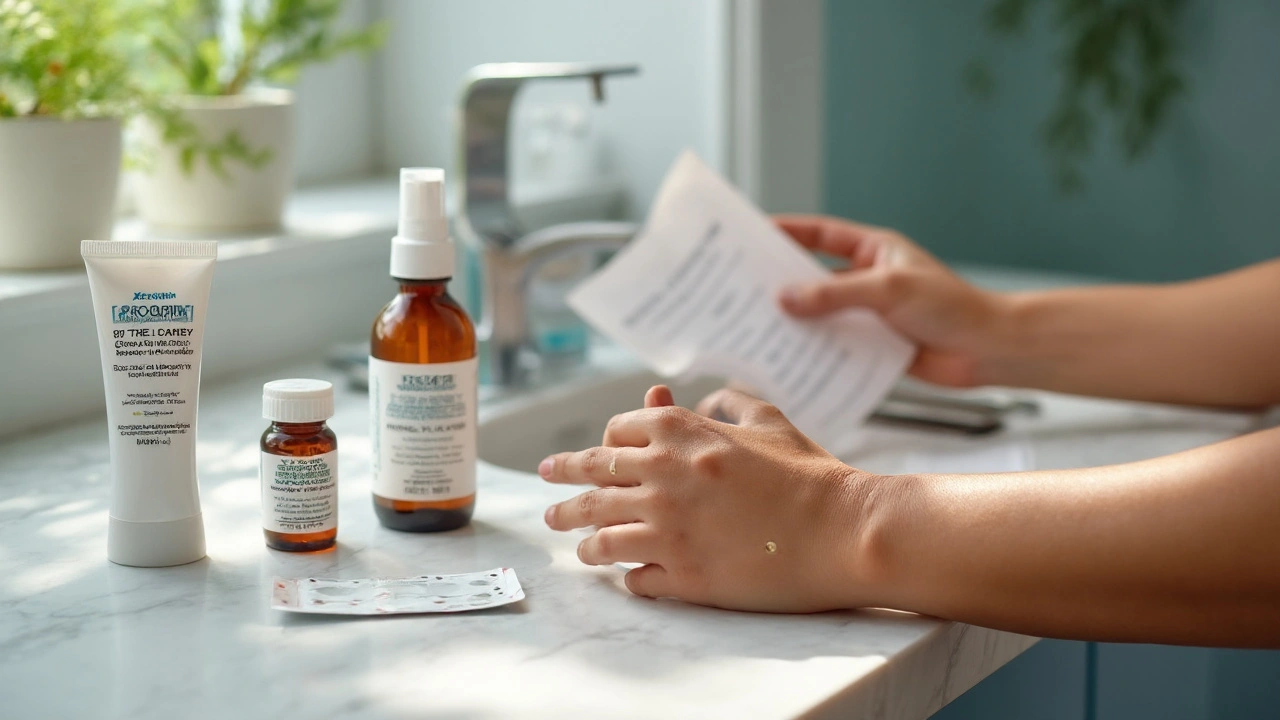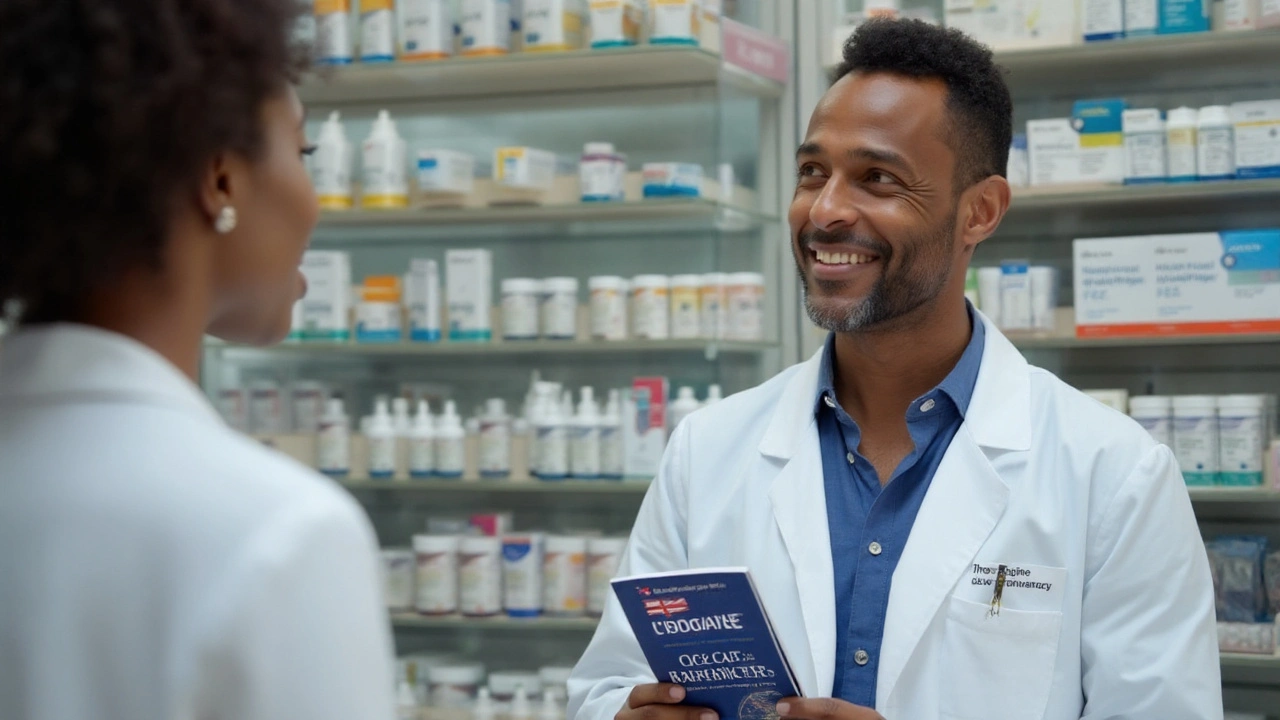
Numb in minutes, trouble if you overdo it. That’s the honest deal with Xylocaine. It’s the go-to local anaesthetic for bites, burns, dental work, and sore throats-but the dosing, the form you pick, and a few sneaky risks matter more than most people think. If you’re in Australia, you’ll see both “lidocaine” and “lignocaine” on packs. Same medicine, just two names. This guide cuts through the noise so you pick the right product, use it safely, and know when to skip it.
TL;DR / Key takeaways
- Xylocaine is lidocaine/lignocaine, a fast-acting local anaesthetic used to numb skin, mouth/throat, and for procedures. Many topical forms are pharmacy (S2), injections are prescription (S4) in Australia.
- Match the form to the job: jelly/ointment for skin, viscous solution/spray for mouth/throat, dental cartridges/injections for clinicians only.
- Don’t use large amounts, on big areas, broken skin, or under occlusion unless a clinician tells you to. That’s how toxicity happens.
- Red flags after dosing: ringing in ears, metallic taste, numb tongue beyond the target, dizziness, confusion, tremor/convulsions, palpitations. Get urgent help.
- Kids, pregnancy, liver disease, heart rhythm meds: check with a pharmacist or doctor before use. For teething babies, avoid viscous lidocaine.
What Xylocaine is and the forms you’ll find in Australia
Xylocaine is the brand name for lidocaine (called lignocaine across much of Australia). It blocks sodium channels in nerves so pain signals don’t fire. You feel numb where you put it. Onset is quick-usually minutes-and wear-off depends on the form and where you use it. Because it doesn’t fix the cause of pain, you use it for short-term relief, prep before procedures, and situations where numbing buys time.
Common Australian formulations you’ll bump into at the pharmacy or in a clinic:
- Topical jelly/gel/ointment (often 2% or 5%): for minor skin procedures, catheter insertion, haemorrhoids, small burns, bites, grazes (intact skin preferred).
- Spray (e.g., 10 mg per spray): for numbing mucous membranes-mouth, throat-often used by clinicians before scopes or dental work; some sprays are pharmacy-only; follow label limits.
- Viscous solution (2%): mouth and throat pain (mouth ulcers, sore throat pre-procedure). Important: not for infants and not for teething.
- Injection (1% or 2%; with or without adrenaline/epinephrine): clinician use only for nerve blocks, stitching, dental anaesthesia.
- Patches (5%): in Australia, lignocaine patches exist (often branded differently), typically for neuropathic pain; pharmacy or prescription depending on brand/indication.
Scheduling (Australia): many topical products are Schedule 2 (pharmacy medicine), while higher-strength topicals, sprays intended for procedural use, and all injectable forms are Schedule 4 (prescription only). This means you can buy some gels/sprays after a pharmacist chat; injections need a clinician.
Where it helps:
- Short, localised pain: mouth ulcers, sore throat before procedures, haemorrhoids, minor burns/sunburn (intact skin), bites.
- Procedures: dental fillings or extractions, skin suturing, catheter insertion, endoscopy prep-handled by trained clinicians.
- Nerve-related skin pain: certain patches can help post-shingles neuralgia.
Where it’s the wrong pick:
- Large wounds or broken/infected skin unless guided by a clinician.
- Chronic widespread pain-this is not a long-term fix.
- Teething babies-don’t use viscous lidocaine here (serious risk of overdose).
| Form | Typical strength | Onset | Duration | Common uses | AU access |
|---|---|---|---|---|---|
| Topical gel/jelly | 2% (20 mg/mL), 5% (50 mg/g) | 3-5 minutes | 20-60 minutes | Minor skin pain, haemorrhoids, catheterisation | S2/S4 depending on strength/pack |
| Ointment/cream | 2-5% | 5-10 minutes | 30-90 minutes | Itchy, sore patches; pre-needle numb | S2/S4; combo creams vary |
| Spray | 10 mg per spray (typical) | 1-5 minutes | 10-30 minutes | Mucosal numbing (mouth/throat) pre-procedure | S2/S4 depending on indication |
| Viscous solution | 2% (20 mg/mL) | 1-3 minutes | 15-30 minutes | Mouth/throat pain relief | Often S4; some packs restricted |
| Injection (with/without adrenaline) | 1% (10 mg/mL), 2% (20 mg/mL) | Immediate-5 minutes | 1-3 hours (longer with adrenaline) | Dentistry, suturing, nerve blocks | S4 (clinician only) |
| Patch | 5% (700 mg per patch typical) | Up to 30 minutes | After removal, effect can persist | Neuropathic pain (e.g., post-herpetic) | S4; brand-dependent |
How to use it safely: simple steps, clear limits
These are consumer-safe pointers for topical and mucosal products you can get at a pharmacy in Australia. Injections and dental cartridges belong to trained professionals.
General rules that keep you out of trouble:
- Use the smallest amount that works, on the smallest area, for the shortest time.
- Don’t cover with airtight dressings unless a clinician tells you to. Occlusion boosts absorption.
- Don’t use on broken or inflamed skin unless the label says it’s okay or a clinician directs you.
- Wash hands after applying, and avoid touching eyes.
- Space out doses. If you still feel numb, don’t re-dose-wait for sensation to return.
- Keep out of reach of kids. Measure doses carefully; avoid kitchen spoons for liquids.
Topical gel/ointment (2-5%):
- Clean and dry the area.
- Apply a thin layer (think “sheen,” not frosting).
- Wait a few minutes before contact with clothes or procedures.
- Reapply only as per label (often every few hours). If you need frequent reapplications over days, check with a pharmacist.
Haemorrhoid/anal use:
- Use products specifically labeled for rectal use.
- Apply a small amount after bowel movements and before bed. Stop and seek advice if bleeding, severe pain, or swelling continues.
Spray (mouth/throat):
- Use the fewest sprays that relieve pain; target the area.
- Avoid swallowing immediately; let it sit briefly.
- Do not eat or drink until your gag reflex and sensation return-choking risk is real.
- Stick to label maximums within 24 hours. If a dentist or doctor gave specific instructions, follow those instead.
Viscous solution 2% (mouth/throat):
- Adults: measure with the supplied cup or syringe. Swish and spit for mouth ulcers; swish and swallow may be used for throat procedures if directed.
- Children: only if product labeling allows and after pharmacist/doctor advice. Never for teething. Keep doses tiny and measured.
Patches (5% lignocaine):
- Apply to intact skin over the painful area for the time stated on the pack (often up to 12 hours on, 12 hours off). Do not exceed the number of patches per day.
- Don’t heat the patch (no heat packs, electric blankets)-this spikes absorption.
When you should not use or should pause and ask:
- Allergy to amide-type local anaesthetics (e.g., lidocaine/lignocaine, bupivacaine, mepivacaine)-true allergy is rare but serious.
- Severe liver disease, heart block, existing arrhythmias, or you take class I antiarrhythmics-get clinician guidance.
- Infants and toddlers-avoid viscous mouth preparations and sprays; risk of toxicity and swallowing issues.
- Large burns, raw skin, or infected areas-absorption shoots up; see a clinician.
Side effects and red flags:
- Common: mild burning or irritation where applied, temporary numbness beyond the target area, unusual taste with sprays.
- Less common but serious (systemic toxicity): ringing in ears, metallic taste, numb tongue/lips spreading, dizziness, drowsiness, confusion, tremors/seizures; slow or irregular heartbeat, fainting. If these show up-seek urgent medical help.
- Rare: methemoglobinemia (grey/blue lips, shortness of breath); more likely in very young children or with certain medicines (e.g., dapsone). Urgent care needed.
Pregnancy and breastfeeding:
- Lignocaine is widely used in pregnancy (including epidurals) and is generally considered compatible when used appropriately. Keep doses minimal for OTC use and confirm with your pharmacist.
- Breastfeeding: topical use is usually fine; wipe off any residual cream on the breast before nursing.
Interactions to keep in mind (more relevant with higher or repeated doses):
- Antiarrhythmics (class I, e.g., mexiletine) and amiodarone-additive cardiac effects.
- Beta-blockers (e.g., propranolol) and cimetidine-can raise lidocaine levels by reducing liver clearance.
- Strong CYP3A4/1A2 inhibitors (e.g., erythromycin, fluvoxamine) with repeated topical use on large areas-may increase exposure.
- Other local anaesthetics-avoid stacking products.
Storage and handling:
- Store at room temperature (below 25°C is typical on Australian packs). Don’t freeze liquids and sprays.
- Check expiry; older anaesthetic solutions may be less effective.

Choosing the right product: quick decisions, smart swaps
Use this short decision path to pick fast and avoid missteps.
- If it’s a small patch on intact skin (bite, small burn, chafe): gel or ointment 2-5%. Thin layer, a few times daily as labeled.
- If it’s mouth ulcers or dental irritation: viscous 2% for adults; measure, swish, spit. For kids, ask the pharmacist; consider bland rinses and protective gels instead.
- If you need throat numbing before a procedure: a clinician will usually apply spray. If self-directed for severe sore throat, first question why-pain that bad warrants a check.
- If it’s haemorrhoids: choose a product made for rectal use; sometimes combined with astringents or steroids. If bleeding or pain lasts beyond a week, get reviewed.
- If it’s nerve-type pain after shingles: ask about lignocaine 5% patches; may require a prescription and is often paired with oral agents.
How it stacks up against close options:
- EMLA cream (lidocaine + prilocaine): great for needle procedures, but slower onset (usually 45-60 minutes under occlusion). Not for mucous membranes.
- Benzocaine lozenges/sprays: fast for sore throat, but more allergy risk; not for kids under certain ages. Lidocaine is often better tolerated.
- Ice/cool packs: free, immediate, short-lived; use as first aid before adding anaesthetics.
“Best for / Not for” at a glance:
- Best for: small, well-defined areas that need brief numbness; pre-procedure numbing; mouth ulcer pain in adults.
- Not for: large open wounds, heavy repeated use on big skin areas, teething, or as a band-aid for undiagnosed severe pain.
Cost and access in Australia (2025): many topical gels/ointments are modestly priced and available behind the pharmacy counter; sprays and viscous solutions vary and may be pharmacist-only or prescription depending on brand and intended use. Patches and injections are usually prescription. Ask your pharmacist to show you the exact schedule for the brand they stock-brands differ.
Checklists, pro tips, and a table you’ll actually use
Quick safety checklist before your first dose today:
- Do I know exactly where I’m applying it, and is the skin intact?
- Have I checked the product’s max frequency for the day?
- Am I free of significant liver disease, arrhythmias, or interacting meds-or have I checked with a pharmacist?
- Is there any chance a child could ingest it (mouth products) or touch the area soon? If yes, rethink or supervise.
- Have I set a short timer (e.g., 15-30 minutes) to reassess before re-dosing?
Practical rules of thumb:
- Less is more. If you can feel relief with a thin smear, that’s the right dose.
- Mouth/throat numbing = delayed eating. Wait until normal sensation returns.
- Spread out exposure. Repeated small applications are safer than one heavy-handed one.
- Avoid mixing multiple anaesthetic products at once (cream + spray + patch). That’s how you creep into toxicity.
- If you need it daily beyond a few days, find the cause. Don’t mask a problem that needs diagnosis.
Onset, duration, and feel:
- Skin: slight cooling or tingling, then numb within 3-10 minutes; wears off in 20-90 minutes.
- Mucosa (mouth/throat): effect in 1-5 minutes; can blunt taste and gag reflex. Respect that.
- Injection (clinician): fast block, deeper numbness, often longer with adrenaline because blood flow is reduced.
Common pitfalls to avoid:
- Slathering it on then covering with plastic wrap “to make it work better.” That spikes absorption.
- Using the same spot all day with patches or frequent gels. Rotate sites; give skin a break.
- Assuming OTC means risk-free. Local anaesthetics can cause systemic toxicity if misused.
- Feeding a child right after throat spray. Wait to prevent choking.
FAQ and what to do next
Mini‑FAQ:
- Is “lidocaine” the same as “lignocaine”? Yes. Same molecule, two names. Xylocaine is a brand of it.
- How fast will it work? Usually within minutes; slower on thick skin, faster on mucous membranes.
- Can I use it on broken skin? Only if the product is indicated for it and ideally with clinician advice-absorption can jump.
- What’s the maximum dose? For consumer use, stick to the exact label maximums. Professional dosing by weight applies to injections and certain mucosal uses and is clinician territory.
- Is it safe in pregnancy? Generally considered compatible when used appropriately; check with your pharmacist for your specific situation.
- What if I accidentally swallow some gel? A small amount usually isn’t a problem, but watch for odd taste, numb tongue, dizziness. If symptoms arise or a child ingests it-seek advice promptly.
- How do I tell an allergy from expected numbness? Allergy shows as rash, hives, swelling, wheeze. Numbness alone is the intended effect.
- Why did my heart race after dental anaesthetic? That’s often the adrenaline (epinephrine) mixed with the local-designed to prolong numbness. Tell your dentist if it felt intense.
Next steps by scenario:
- Minor skin pain, intact skin: pick a 2-5% gel/ointment from the pharmacy, apply a thin layer, and reassess in 15 minutes. If you need it more than a couple of days, get checked.
- Mouth ulcers/stomatitis (adult): viscous 2%-measure, swish, spit; pair with saltwater rinses and bland diet. If ulcers persist beyond two weeks or are severe, see your GP or dentist.
- Sore throat bad enough to need numbing: you need a diagnosis. Fever, inability to swallow fluids, drooling, or one-sided throat pain-seek same-day care.
- Haemorrhoids: short course of a rectal-appropriate lignocaine product plus fibre and fluids. Bleeding or pain beyond a week-get assessed.
- Post-shingles nerve pain: talk to your GP about lignocaine 5% patches and adjunct therapies (gabapentinoids, TCAs). Don’t self-manage for weeks without a plan.
If things go sideways (troubleshooting):
- I feel weird (ringing in ears, metallic taste, dizzy): stop using the product immediately. Sit or lie down. If symptoms escalate-call for urgent help.
- No effect after two thin applications: your pain may not respond to local anaesthetic, or the target is too deep. Switch strategy and get advice.
- Skin irritation or rash: wash off, allow skin to recover, and try a different base (gel vs ointment) or a different class after pharmacist advice.
Why you can trust this guidance: it aligns with Australian sources like the Therapeutic Goods Administration Product Information for Xylocaine-branded lignocaine, the Australian Medicines Handbook 2025, and Therapeutic Guidelines (Anaesthesia and related chapters). These outline indications, dosing ranges, contraindications, and known adverse effects for lignocaine across formulations used here in Australia.
Quick reminder: this is general information. Your pharmacist or doctor can tailor advice to your health history, current meds, and the exact brand/formulation in your hand. If you’re unsure, a two-minute chat at the pharmacy in Sydney (or anywhere in Australia) beats guessing.
Arup Kuri
So they're telling you to use this stuff like it's ibuprofen now? Lidocaine isn't a snack, it's a controlled substance in most countries. I've seen people put it on their kids' gums for teething because some dumb ad said it's 'safe'-and then the ER calls it a pediatric emergency. This isn't advice, it's a liability waiting to happen. Pharmacies are handing this out like candy and nobody's paying attention until someone stops breathing. Wake up, Australia.
Elise Lakey
I appreciate how thorough this is. I’ve used the 5% patch for post-herpetic neuralgia and found it really helpful-but I had to talk to my pharmacist first because I’m on a beta-blocker. The part about not mixing products really stood out to me. I used to slap on gel, then spray, then patch… didn’t realize I was stacking risks. Small changes like measuring with the syringe instead of a spoon made a big difference. Thanks for the clarity.
Erika Hunt
I just want to say how much I appreciate the way this guide breaks down the differences between forms-like how the spray is meant for clinicians but some are OTC, and how the viscous solution isn't for babies, ever. I used to think 'pharmacy-only' meant 'totally safe,' but now I see it's more like 'you should at least ask someone before using it.' Also, the checklist at the end? Genius. I printed it and stuck it on my fridge next to my meds. And I love that you mentioned the adrenaline in dental shots-it totally explains why my heart races after fillings, and now I don't panic anymore. Thank you for not talking down to people.
Sharley Agarwal
They let you buy this at the pharmacy? No.
Timothy Sadleir
While the intent of this document is commendable, one must interrogate the underlying epistemological framework that permits the commodification of neuropharmacological agents under the guise of consumer autonomy. The regulatory distinction between S2 and S4 substances, while ostensibly pragmatic, obscures a deeper systemic failure: the normalization of chemical numbing as a substitute for diagnostic inquiry. When a populace is encouraged to self-administer sodium channel blockers for transient discomfort, we are not practicing medicine-we are practicing pharmacological appeasement. The fact that this guide even needs to exist suggests a civilization that has outsourced its capacity for tolerating discomfort to chemical intermediaries. One must ask: Are we healing, or merely silencing the body’s warnings?






Write a comment